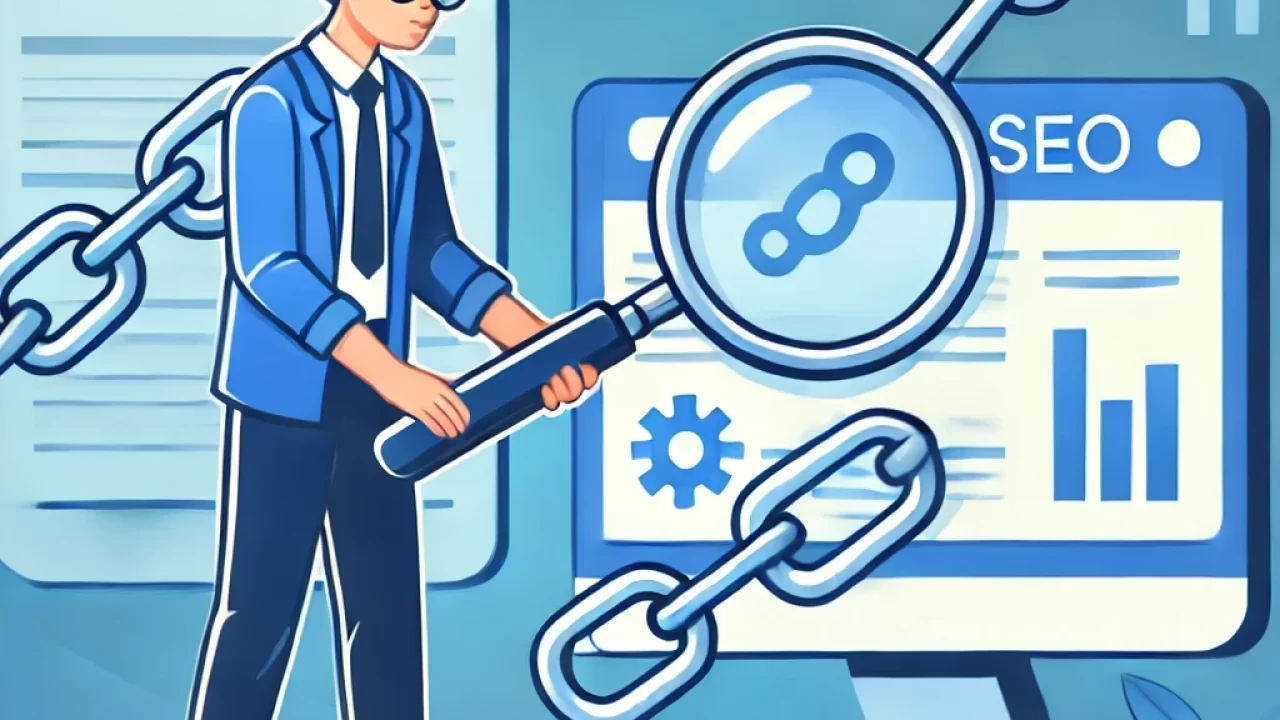Even with the best efforts to build and maintain a strong link profile, websites can still experience the loss of valuable backlinks, negatively impacting their search engine rankings. This is where link reclamation comes into play – a process that involves identifying and recovering lost links to regain their SEO value and strengthen your website’s online presence.
Link reclamation is essential for several reasons, including reclaiming SEO value from broken or lost links, retaining referral traffic, and establishing and nurturing relationships with other website owners. By understanding the importance of this strategy, being proactive in identifying lost links, and employing effective recovery techniques, you can prevent potential damage to your website’s ranking and maintain its position in search engine results.
Key Takeaways
- Link reclamation is a valuable SEO strategy for recovering lost link value and maintaining search engine rankings.
- Identifying and assessing the quality of lost links is crucial for effective link reclamation.
- Employing recovery strategies and preventing link loss can help nurture relationships with other website owners and secure your website’s standing in search results.
The Importance of Link Reclamation
Understanding Link Value
Link reclamation is essential in maintaining your website’s authority, as it helps recover lost link value. The value of a link refers to the positive impact the link has on your website’s ranking and credibility. When you lose valuable backlinks, it can lead to increased referral traffic and a stronger link profile. Reclaiming these lost links can regain the link value and ensure your site remains competitive in search engine results.
There are various reasons for lost links, including:
- The web admins remove the link from the page
- The content on the linking page is updated without reference to your site
- The linking page is deleted or redirected
To find lost backlinks, you can utilize tools like Ahrefs or Semrush. These tools will crawl your website and identify lost backlinks that need to be reclaimed.
Impact on SEO and Rankings
The primary goal of link reclamation is to regain lost SEO value and improve your website’s overall authority. When your site has a robust link profile, search engines view it as more credible and authoritative, thus giving it a higher ranking in search results. Consequently, recovering lost backlinks is critical in maintaining your online presence and visibility.
For an effective link reclamation process, follow these steps:
- Identify lost links: Use backlink analysis tools like Ahrefs or Semrush to find lost backlinks on your website.
- Determine the reason for link loss: Find out why the link was lost, such as content update, deletion, or redirection.
- Contact the web admins: Reach out to the web admins or owner of the linking site to request that they add your link back or fix any errors that led to the link loss.
Remember that link reclamation is an ongoing process; constantly monitoring your backlinks and taking action when necessary will help you maintain a strong link profile, ultimately leading to improved SEO and rankings.
Identifying Lost Links
Tools and Techniques
To identify lost links, you can utilize various SEO tools and techniques. Some popular tools include Ahrefs, Moz, and SEMrush. These platforms offer features to check your backlink profile, allowing you to pinpoint which links have been lost and when.
By analyzing your backlink profile, you can track the following metrics:
- Lost Referring Domains: Referring domains that have stopped linking to your content.
- Link Status: The current status of your backlinks—live, broken, or redirected.
- Anchor Text: The clickable text used in the lost backlinks.
Keep track of these metrics to efficiently identify the cause of link loss and take appropriate steps to recover them.
Common Causes of Link Loss
There are various causes of lost links. Some common ones are:
- Website Updates: Content or structure updates on the referring domain’s website might lead to removed or broken links.
- Link Rot: Over time, websites age, and resources become outdated, causing links to be lost or broken.
- Unnatural Links: Search engines like Google penalize sites with unnatural or spammy backlink profiles, causing the loss of such links.
- Expired Domains: All links are lost if a referring domain expires.
By staying informed about the common causes of link loss, you can develop a proactive approach to maintaining your backlink profile and reducing the impact of lost links on your SEO value.
Assessing the Quality of Lost Links
Assessing the quality of the lost links before you embark on your link reclamation journey is important. High-quality, relevant links offer more value in SEO and gaining referral traffic. In contrast, low-quality or spammy links can harm your site’s reputation and may result in penalties from search engines.
To evaluate the quality of lost links, consider the following factors:
- Domain Authority (DA): Check the Domain Authority of the linking website. Sites with higher DA scores generally provide more value in terms of SEO. You can use tools like Moz’s Link Explorer or Ahrefs’ Site Explorer to find the DA of a website.
- Relevance: Ensure the linking site is related to your industry or niche. If the site’s content is not relevant to your site, regaining the lost link may offer little benefit.
- Link Position: Evaluate the placement of the link within the referring website. Links within the main content area carry more weight than those in sidebars or footers.
- Anchor Text: The anchor text used for the link should be relevant to your site’s content or the linked page. Ideally, it should include your target keyword or a variation of it.
- Link Type: Look at whether the lost link was a do-follow or no-follow link. Do-follow links pass on more SEO value, so prioritize reclaiming these.
Once you have assessed the quality of the lost links, prioritize those offering the most value. Focus your link reclamation efforts on high-quality, relevant links first to maximize your chances of success and make the most of your time and resources.
Strategies for Recovering Lost Links
Outreach for Link Restoration
One effective strategy for recovering lost links is through outreach. Start by identifying the lost links using tools such as Ahrefs or Majestic, which can provide an exportable list of your site’s links. Then, analyze these links to determine their value and worth pursuing.
Once you have identified valuable lost links, contact the web admins of the websites hosting those links. Politely requests that they restore the link, providing the appropriate context for the original link and the correct URL. Keep track of your outreach efforts and responses; this information may be useful for future reference.
Remember to be professional and considerate during outreach, as building strong relationships with other website owners can benefit future collaboration and link building efforts.
Reclaiming Links from Site Migrations
Lost links often occur during site migrations, whether because of changing domains, updating site structure, or redesigning a website. To reclaim these lost links, identify 301 redirects, broken internal links, or 404 error pages using crawler tools such as Screaming Frog or DeepCrawl.
Once you have identified these lost links, take the following steps to restore them:
- Fix broken internal links: Update the HTML or content management system to create an appropriate link between the relevant pages. This will prevent users and search engines from encountering broken links.
- Implement 301 redirects: If your website has changed its domain name or URL structure, implement a 301 redirect to inform search engines that the content has been permanently moved. This will help transfer the SEO value from the old URL to the new one.
- Create custom 404 pages: Design a user-friendly 404 page with clear instructions for users to find the content they want. This could include a search box, a list of popular pages, or a link to your homepage.
By implementing these strategies, you can effectively reclaim lost links from site migrations and recover the SEO value they once provided to your website.
Preventing Link Loss
Regular Link Audits
Conducting regular link audits is essential in preventing link loss. By analyzing your backlink profile, you can identify and address potential issues before they impact your SEO value. To perform a link audit, follow these simple steps:
- Gather a list of your backlinks: Use tools such as Google Search Console, Ahrefs, or Moz to obtain your backlink data quickly.
- Assess the quality of the links: Evaluate the domain authority, webpage content, and anchor text for each backlink.
- Identify and remove low-quality or harmful links: Disavow or request the removal of links that may negatively affect your website’s SEO performance.
Remember to perform link audits at least once every three months to keep your backlink profile in optimal shape and minimize the risk of link loss.
Maintaining Website Health
Another valuable approach to preventing link loss is ensuring the overall health of your website. This includes keeping your site up-to-date, secure, and user-friendly. Take these steps to maintain your website’s health:
- Regularly update your content: Fresh, relevant content increases the likelihood of earning high-quality, organic backlinks. Keep your website updated with new blog posts, articles, or resources that are valuable and unique to your niche.
- Fix broken links: Utilize tools like Screaming Frog or Xenu to detect and resolve broken internal and external links. This will help improve user experience and maintain your site’s credibility.
- Optimize site speed: A fast-loading website is essential for users and search engines. Start by compressing images, optimizing CSS, and implementing browser caching to reduce load times and maintain a seamless browsing experience.
- Ensure mobile-friendliness: Many users and potential linkers will visit your site via mobile devices, so it’s important to ensure your website is easily navigable and responsive on all devices.
By prioritizing regularly monitoring website health and consistent link audits, you’re on the right path to preventing link loss and preserving your hard-earned SEO value.
Frequently Asked Questions
What steps should be taken to identify lost backlinks?
To identify lost backlinks, you should start by taking an inventory of your existing backlinks. You can use tools like Google Search Console, Ahrefs, or Moz to analyze your backlink profile and compare it to previous records. Identify any backlinks that have disappeared or been altered and prioritize them based on their potential SEO value.
What tools are recommended for tracking the status of backlinks?
Some popular tools for tracking the status of backlinks include Ahrefs, Moz, SEMrush, and Google Search Console. These tools can help you monitor your backlink profile over time, identify lost or broken links, and provide insight into the authority and quality of the linking domains.
How can I reach out to web admins to restore lost backlinks effectively?
It is important to establish professional and polite communication with web admins to restore lost backlinks. Begin by identifying the appropriate contact information, then craft a personalized email explaining the issue and requesting the restoration of the link. Be sure to provide a clear call to action and any necessary context or evidence. If you are still waiting for a response, consider following up after a week or so, but avoid being too aggressive in your approach.
What are the common causes of link loss, and how can they be prevented?
Common causes of link loss include changes in website content or structure, removal of content by the linking site, and links being considered spammy or low-quality. To prevent link loss, consistently produce valuable, high-quality content and regularly audit your website to ensure that your internal and external links are functioning. Additionally, proactively monitor your backlink profile and address any drops in links as soon as they happen.
After recovering a lost link, how can its value be maintained over time?
To maintain the value of a recovered link, ensure that both the linked content and the linking site remain valuable and relevant over time. Regularly update your content to keep it fresh and informative while monitoring the linking site’s authority and reputation. Cultivate relationships with web admins and use natural link-building methods, such as guest blogging or influencer partnerships, to build a diverse and trustworthy backlink profile.
What impact does link reclamation have on overall website authority and ranking?
Link reclamation can significantly impact website authority and ranking by restoring valuable backlinks and improving your site’s overall credibility. By recovering lost links, you can strengthen your backlink profile, increase referral traffic, and enhance your site’s standing in the eyes of search engines. Effectively and consistently addressing link loss can positively affect your website’s SEO strategy and long-term online success.





